Sorry gamers, the Nintendo 2DS you're looking for is in another castle
Meet the new generation, no better than the old

Anyone hoping Nintendo would invent the 4DS in time for its next portable system was sorely mistaken today when the company unveiled plans for the Oct. 12-bound Nintendo 2DS.
This non-3D handheld gaming system is a step backward in terms of radical new technology, further proving that supposed "eye-popping graphics" add little to gameplay and movie watching experiences.
Nintendo 2DS rectifies that blazed trail gone cold with a cheaper solution that's more parent friendly at $129.99 (about £84, AU$145). It's also kid friendly, doing away with the obnoxious Nintendo 3DS warning messages for children under seven.
But like every Nintendo product launch in recent years, the 2DS is mired by some strange design choices.
Fans of the Mario company are going to see some great ideas, but inevitably realize that the proper handheld they're looking for is in another castle.
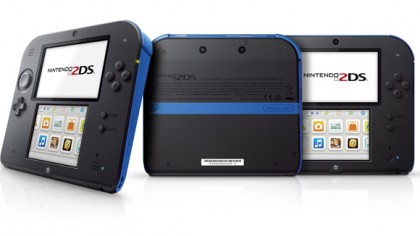
The price is (almost) right
The Nintendo 2DS price is $129.99 (about £84, AU$145), which is $40 less (about £26, AU$45 less) than the original Nintendo 3DS and a more meaningful $70 cheaper (about £45, AU$78 cheaper) than the Nintendo 3DS XL model.
Compared to its closest non-Nintendo competition, the 2DS is also $70 cheaper than the PS Vita, which Sony recently price dropped to $199 and €199. It can't go any lower to match Nintendo's new entry-level offering.
Sign up for breaking news, reviews, opinion, top tech deals, and more.
By far, shaving a dimension from the 3DS has given way to a more budget-friendly portable. Few people wanted that expensive glasses-free 3D screen after five minutes anyway.
It misses the sweet spot of $99 (about £64, AU$110), but the price point isn't what's going to cause every handheld-devoted gamer to throw up their often-preoccupied hands.
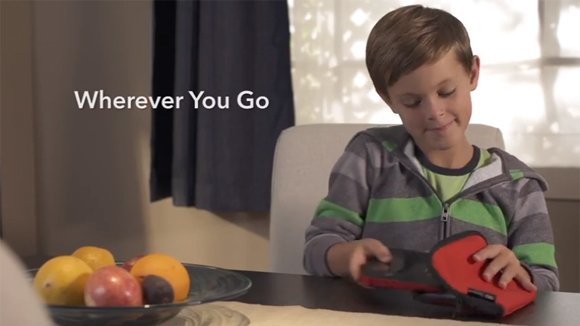
What happened to the clamshell design?
Just because the Nintendo 2DS lacks stereoscopic 3D graphics doesn't mean it should just lay there flat as a board. But that's the exact "bored" looking design the company went with.
The 2DS is Nintendo 3DS "unhinged," but that's not a positive change. It no longer sports a clamshell design that folds the handheld in half to make it easily pocketable.
Likewise, the non-foldable 2DS form factor means that the system's plastic housing no longer doubles as a protective case for its two screens.
The reason? "The screen is one piece," a Nintendo spokesperson told TechRadar. Flexible screens aren't ready for handheld gaming just yet.
That's great news for accessory companies looking to sell new 2DS carry-all bags, but irritating for gamers, even the younger crowd that Nintendo seems to be going after.
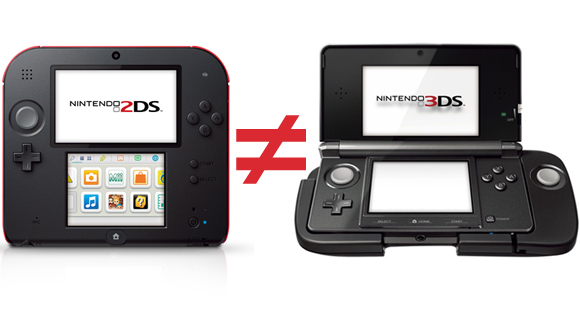
No dual analog on 2DS
The 2DS controls alter the location of the circle pad and face buttons; they're now in line with the top screen. Meanwhile, the D-Pad and the start and select buttons are closer to the smaller bottom screen.
Like choking up on a bat, that is likely to make gaming a more intense experience, especially considering most of the action happens on the top screen.
There's ample room for a built-in second analog stick, something gamers have been clamoring for in the last several years, but Nintendo failed to deliver here.
Yes, the company came out with the Circle Pad Pro accessory, but because it wasn't included with the system in the first place, support among developers has remained limited.
So far, Nintendo hasn't said whether another dual analog accessory revision will come out to match the underutilized Circle Pad Pro and Circle Pad Pro XL already available.
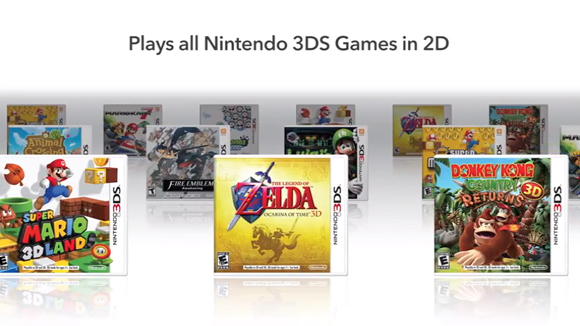
Same games, sort of
Nintendo's hardware design choices are perplexing to say the least. But in an age where Xbox One and PS4 games aren't backward compatible, it's nice to see the Big N step up and do the right thing here.
Nintendo 2DS can play all 3DS games now and in the future, and it's compatible with more than 2,000 games in the DS library.
That's perfect for the younger demographic Nintendo is targeting, but it's also going to be a bit challenging for games in which 3DS is a function of the gameplay and not just a graphical selling point.
Super Mario Bros 3D Land, for example, has "3D visuals [that] make it easier for players to judge the depths and distances in their environments," according to Nintendo's official marketing bullet points.
"Players can more accurately judge the jump to the next platform or how far Mario is from a question block."
All of a sudden, gamers are going to have a little more trouble (and a lot more untimely deaths) when playing one of the system's best platforming games.
Effect on developers
Existing Nintendo 3DS owners may think that the 2DS doesn't matter, especially if they just bought a brand new 3DS XL.
However, they may start seeing fewer groundbreaking 3D games on their still-3D console due to the fact that the third dimension will matter even less to developers after Oct. 12.
After all, why go the extra mile for 3DS effects when a growing part of the post-DS hardware lineup can't even enjoy the ill-fated technology anyway.
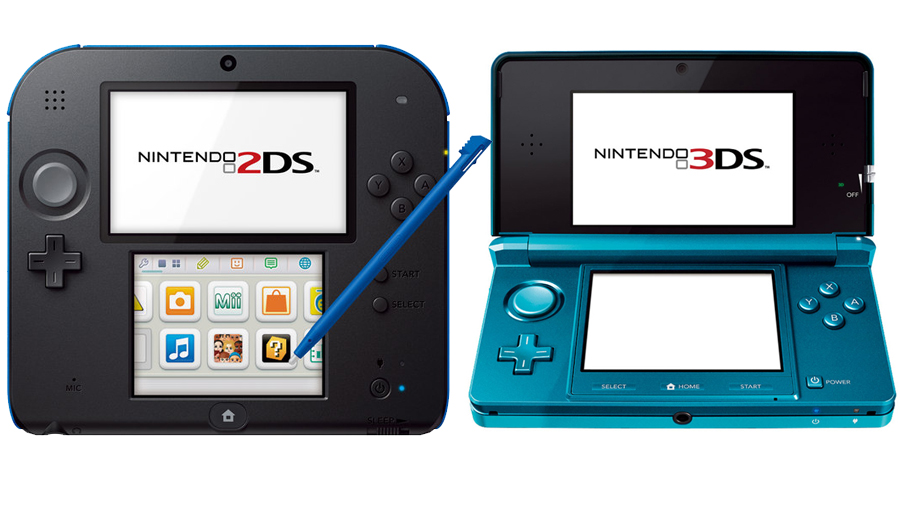
Nintendo 3DS vs Nintendo 2DS
The surprise announcement of the Nintendo 2DS might leave you wondering which to buy if you're in need of a new handheld.
Nintendo 3DS has stereoscopic 3D graphics, but despite being a fun tech demo, the novelty wears off quickly. Likewise, developers may be less inclined to push 3D in future games now.
The 2DS is cheaper and shifts the Circle Pad and face buttons closer to the top screen action. But it's bizarre non-clamshell design makes it less pocketable and it still doesn't have a Circle Pad Pro accessory available.
This is not the 4DS console we're waiting for. Meet the new generation - different, but no better than the old one.
